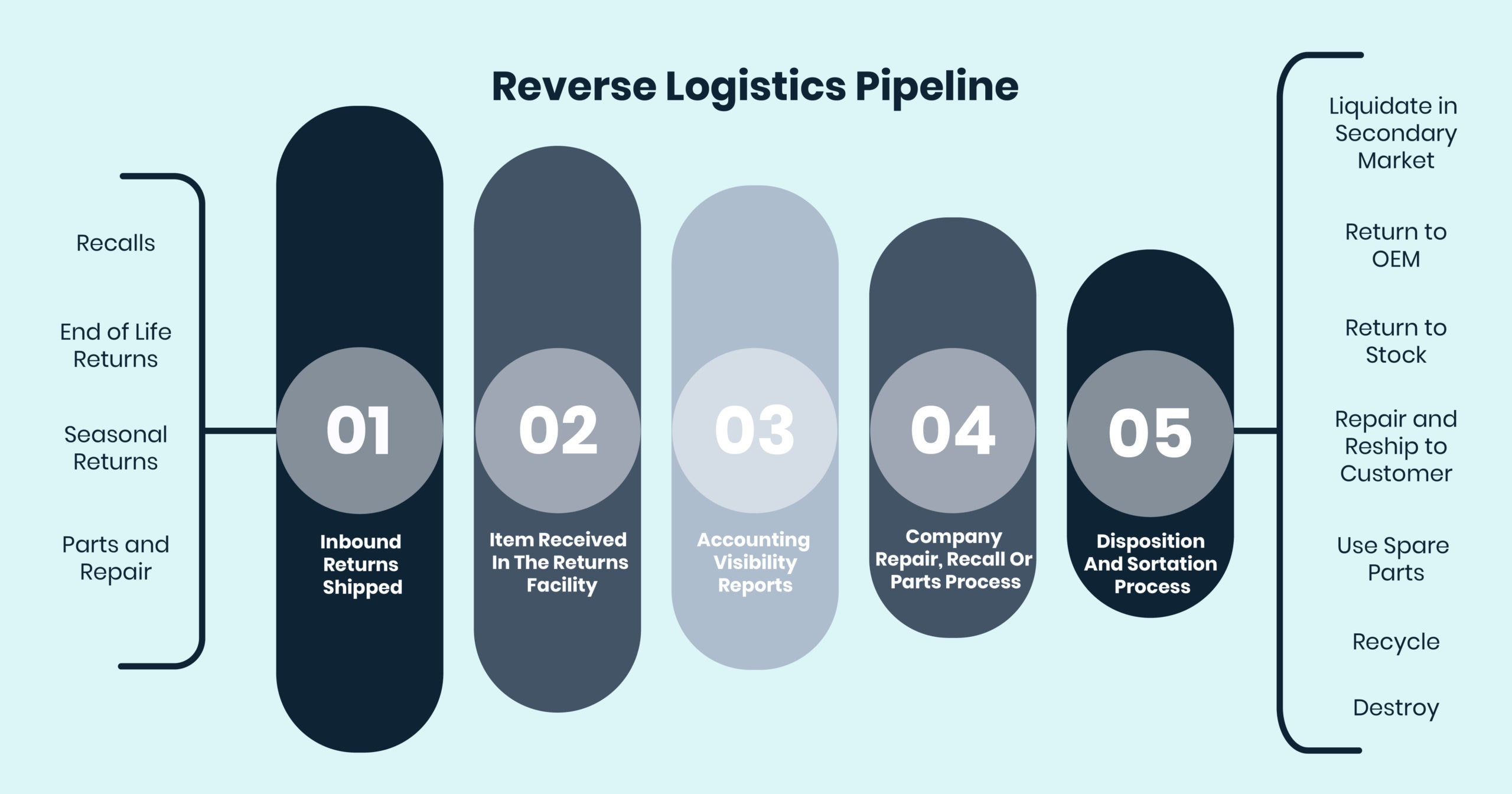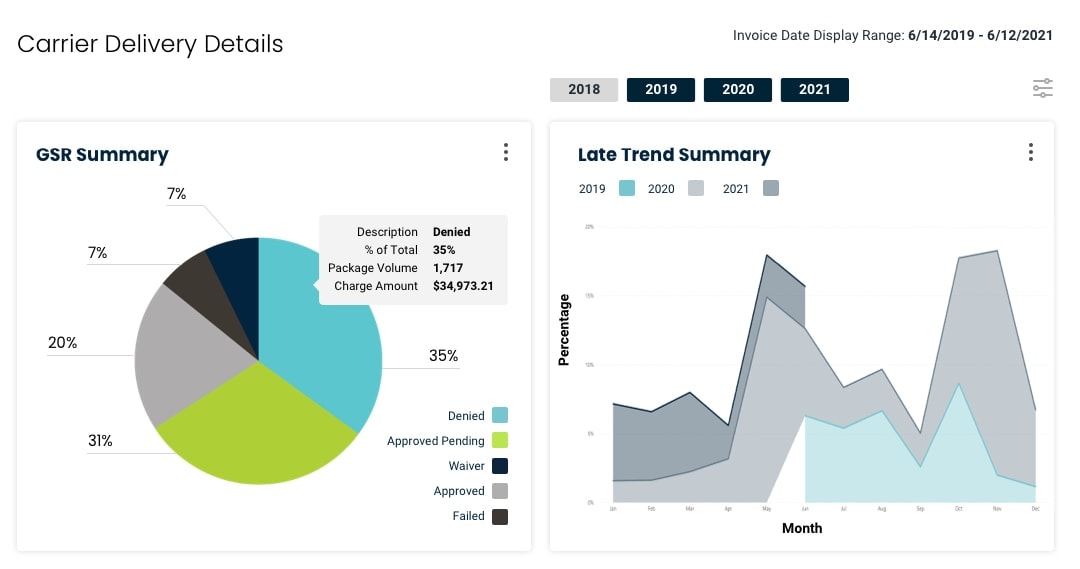In the ecommerce world, time is money. Quite literally.
The faster you deliver, the more profits you make.
The one thing that determines the success of an ecommerce business is – how well they serve their customers.
And customer process excellence is a direct result of effective logistics management.
Having access to accurate product data is having the power to make informed business decisions, exceeding customer expectations, and increasing profits without the sales overhead.
All of this is completely dependent on accurate logistics management systems.
Here are 5 logistics management strategies for ecommerce companies looking to reduce costs using data analytics:
1. Minimize Shipping Costs by Tracking Supply Chain Expenditure
Powerful logistics automation and data analytics help you manage freight costs, transportation management, and logistics operations from one central platform.
The data from various supply chain departments integrate seamlessly to provide an overview of freight costs, charges, expenditures, and savings.
Having accurate data to compare company ledgers, profits, and losses over a period of time is a business superpower. It gives you insights into business decisions that have worked well so far, and also the ones that haven’t. You can take what’s worked and improvise from there. Or pinpoint what’s not working and switch to alternative solutions.
The thing is, with access to accurate data like this, you’re eliminating the possibility of human error, saving time, and saving loads of money by avoiding scouring manual ledgers.
With access to data, your business decisions won’t be your best guesses, they’ll be a logical approach towards profitability.
2. Increase Shipping Speed and Delivery Accuracy
Fast, free shipping of ecommerce products in 2021 is not what customers expect anymore. It’s the norm. Look at these interesting ecommerce customer stats below:
- 73% of ecommerce customers expect affordable and swift delivery
- 38% of customers say they’ll never buy from the seller if they have a negative delivery experience
- 24% of customers cancel their orders due to slow delivery speed
Imagine not having digital access to customer data, product information, supply chain status, and delivery conditions in one place. As mentioned earlier, there’s a high possibility of manual error that may eventually lead to product displacement. And product displacement due to human error is one of the major causes of financial losses. Because they directly impact product sales predictions.
Optimizing your inventory management processes to reduce shipping time and delivery errors decides the growth of your ecommerce brand.
Your ability to accurately deliver a product on/before time is directly proportional to customer satisfaction.
When you have access to accurate, real-time data like package dimensions, freight rates, freight company, service, etc, in one place, in case of a discrepancy, you can take control of business operations immediately. With data like this in hand, you can make informed decisions to manage shipping speeds and keep your customers notified about their products. Because assurance and certainty play a huge role in customer retention. Data is that superpower that makes it possible to keep your customer in the loop and increase customer engagement with the brand.
3. Optimize Reverse Logistics to increase CLV (Customer Lifetime Value)
- 71% of customers are more likely to buy from you again if they are happy with the way the product return process is handled
- Optimizing reverse logistics can reduce the returns processing cost by 25% and increase productivity by 10%. It can further lead to significant growth in customer satisfaction and retention – thereby increasing net profits by 2 to 5%
Product recalls are often ignored by businesses because they’re more focused on making sales with forward logistics even when effective management of reverse logistics can save millions of dollars in supply chain costs and reduce churn.
How To Use Data Analytics To Track Reverse Logistics

As shown in the image above, the reverse logistics pipeline has several stages. Transport data analytics not only helps manage inventory efficiently at each stage of reverse logistics but also helps track and repurpose the inventory.
Tracking reverse logistics has 3 advantages:
- It keeps the sales pipeline full by reusing recalled products and hence eliminating the risk of possible losses
- It helps sort ready-to-refurbish products and increase profit margins when you can polish/fix the product and recapture the market value of the product
- It helps reduce waste by making it easy for ecommerce brands to adopt sustainable packaging solutions and save the planet
4. Optimize Warehousing Management Systems
If your ecommerce store has an “Order online, pick up in-store” purchasing option, you need a steady Warehousing Management System (WMS) to work in tandem with transport data analytics to lower operational costs.
WMS helps save time in locating a product quickly by optimizing warehouse spaces, material movement processes, and product retrieval.
A WMS also helps keep a track of the real-time availability of inventory. This has 3 benefits to the company:
- Effectively trace and track inventory
- Streamline delivery processes
- Accurately estimate supply and avoid backorders
5. How tracking freight and supply chain management data saves you millions of dollars

Benefits of tracking freight management data. Freight management strategies. A Gartner study says that by 2023, 50% of global leading enterprises will have invested in a transportation solution with real-time visibility because businesses are realizing that evaluating your data is key.
Poor data visibility along with data inaccuracies can lead to erroneous, outdated, or irrelevant metrics. Yet, most shippers and ecommerce companies fail to take ownership of their data. They fail to capture their own freight activity. Instead, they depend on carrier service companies to send reports and statuses. This is a costly mistake because third-party shipping data and reports are sporadic. You have limited access and visibility to real-time logistics. The data from carrier companies is hard to assess because it’s insufficient.
It’s important to have control over your data because millions of dollars in revenue is at stake if you’re unsure of product status metrics.
Therefore, capturing your data in one central portal is crucial to increasing your ecommerce brand’s bottom line.
Need help setting up a logistics analytics system? Book a free demo here.











